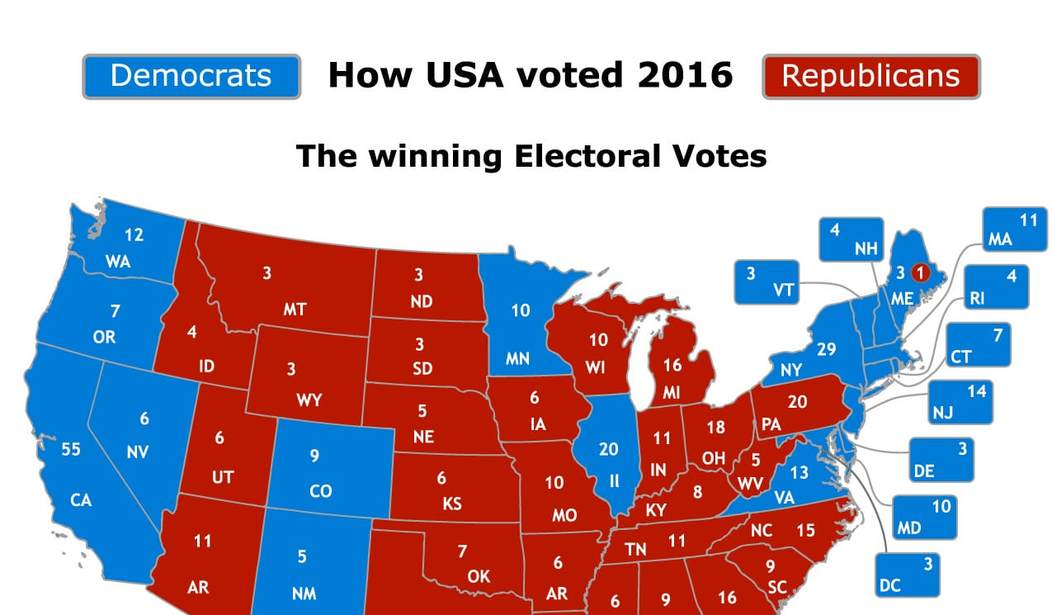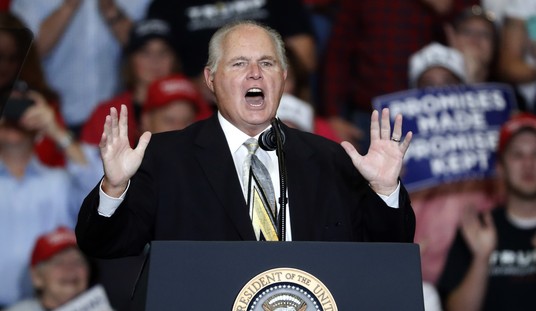With politicians beginning to announce their candidacies for the 2020 presidential race, the topic of the Electoral College is once again emerging to the forefront of American politics. Since Hillary Clinton lost the 2016 presidential election with 2.9 million more votes than Donald Trump, and Al Gore lost the 2000 election despite outpacing George Bush by half a million votes, little has had a greater effect on the presidency in modern times than the institution of the Electoral College.
At the founding of the United States, there was plenty of controversy regarding the means by which the president would be elected. Many thought that Congress should elect the president directly, although others feared that such an establishment would give Congress a tyrannical degree of power. James Madison worried extensively about a true democratic election, fearing that the masses would vote to elect men who would encroach on the constitutional rights of other citizens in the name of the public good (an eerie thought in light of Senator Bernie Sanders’ recent announcement of his second presidential bid).
With a term later popularized by Alexis de Tocqueville as “tyranny of the majority,” the Founders sought to develop a system in which a small body of well-informed, educated, and passionate citizens would themselves elect the next president of the United States who would best represent the interests of the nation. In 1787, James Wilson created the Electoral College we know today which is enshrined in Article 1 Section 2 of the Constitution; however, the college today is effectively just a shell of the founder’s original intent, with most electors being legally bound to vote in direct accordance with the popular vote.
While there is little debate over whether the Constitution was pivotal to prospering America’s development, modern issues ranging from gun control to eminent domain leave many questioning the document’s efficacy and applicability in the 21st century. The question boils down to: Does the Constitution misunderstand modern America, or has America lost touch with the Constitution?
Arguably, to a certain degree, it is a question of semantics. We either need a new constitution because this nation’s most sacred basis for law is an outdated document written by a bunch of drunk libertarian farmers, or Americans need to realign their philosophy after losing touch with the values of the Founding Fathers due to political apathy and a century of complacency.
Unfortunately, when it comes to the Electoral College, the modern dialogue consists of liberals screaming that the institution is non-democratic due to it not being based on the popular vote, and conservatives regurgitating excerpts of Thomas Jefferson warning of the tyranny of the majority and arguing that we have a democratic republic — not a democracy. There is some legitimacy to this response, but one must also recognize the frustration of the Left after losing an election they otherwise had the votes to win (for the second time in two decades) in a country founded on rebellion from being governed without proper representation.
Anyone who honestly reflects on the issue quickly realizes that Republicans and Democrats are simply advocating for whatever stance is politically advantageous to their party, and the conservative response doesn’t adequately address the underlying dilemma: Is a democratic republic more appropriate for 21stcentury America than a pure democracy?
To properly address this question, one must reevaluate not just the Founding Fathers’ words, but their intent given the sociopolitical climate of the time in designing a democratic republic.
First, in 1788 when the Constitution was ratified, individuals weren’t American. Sure, they were prideful citizens of the great new nation that fought off the greatest military in the world in the name of liberty. But first and foremost, they were New Yorkers, Virginians, Pennsylvanians, Rhode Islanders, etcetera. They identified with the state in which they lived which most accurately represented their personal interests.
In large part, this was due to the different economic interests of the new states. Northern coastal states such as New York had principle interests in manufacturing and international trade, whereas Southern and non-coastal states were concerned primarily with agriculture. In addition to the fundamentally different means of revenue, their currencies weren’t even identical. “Money” ranged from coins to paper to trading commodities, and cash was not equivalent from state to state. A Massachusetts pound was worth less than a Pennsylvania pound, which was worth less than the internationally accepted British pound.
Further, there were logistical barriers between the states. In the era of quill pens and horseback, it would take days to weeks for the more distant states’ representatives to reach Philadelphia. Some of the new states such as Rhode Island often wouldn’t send representatives to conventions at all. Then there were ideological disagreements. Thus, with varying cultures, economies, and political climates, there was a natural degree of disconnect between the states.
There was, of course, a federal government. That was the whole purpose of the Constitution, after all. Alexander Hamilton, James Madison, and John Jay recognized that a unifying government was necessary for the security and wellbeing of developing America. The Founding Fathers were acutely aware of the disproportionate security risks posed to the coastal states, the unequal tariffs burdening those involved more heavily in international trade, the risk of neighboring states detrimentally taxing one another’s goods and waging war over border disputes, the need for uniform arrangements and dealings with foreign nations, and the like. But, the purpose of the federal government was solely to aid in the functioning of the states themselves.
That said, the founders of this nation were equally cognizant of the risk of “tyranny of the majority.” In 1770, Virginia had a population of 447,000, while Georgia had a population 19 times smaller, at 23,000. Surely the Georgians did not want the Virginians 500 miles away governing their way of life, regardless of the size of their state. The Founding Fathers recognized this and purposefully assigned states one elector per congressman, meaning it was a compromise between the population-based House of Representatives and the uniformly allotted Senate. But again, this was at a time when Georgians and Virginians would hardly interact.
The problem nowadays is compounded by the population density of some states still far exceeding their allotted number of electoral votes. California has 39.5 million residents and 55 electors, equating to one elector per 718,182 citizens. By contrast, Wyoming only has a population of 579,315 and has three electors, which equates to one elector per 193,105 citizens. Thus, a Wyomingite’s vote is worth 3.7 times more than a Californian’s. Comparing Louisiana, which is allotted eight electors and has a median population in the United States of 4.66 million, Louisianans’ votes are worth three times more than Californians’.
Even if one is to argue that such a disproportionate system is necessary today to protect the interests of the “flyover” states, the way this is executed on a state level is horribly flawed. Every state in the country, with the exception of only two, has a “winner-take-all” system, meaning if 51 percent of Ohioans vote Democrat and 49 percent vote Republican, all 18 electoral votes will go blue. Only two states — Nebraska and Maine — have an allocation system in which the winner automatically gets two electoral votes, and the remainder are divvied based on proportional support.
So let’s take a look again at California — a state that controls 10 percent of the Electoral College — in which 44.4 percent voted Democrat and only 25.1 percent voted Republican in the last gubernatorial election. Should California adopt such a system, the Democratic nominee would earn 26 electoral votes, the Republican nominee 13, and independent nominees 16 (although in such a system it is highly unlikely that independent parties would gain 26 percent of the votes). Thus, Republicans in California would be given a voice actually equal to the entire state of Virginia. This is the system the Founding Fathers truly intended: one in which Republicans can live in New York and Democrats in Texas without having their votes entirely marginalized, all while still respecting the rights of the smaller states.
Again, though, the fundamental issue with the Electoral College is Americans today are first and foremost citizens of their country — not their state. While this is partially due to the increased power that’s been exponentially given to the federal government — which the drafters of the Constitution would abhor — it’s also due to a degree of connectedness that was unfathomable in 1776. Between the inventions of planes and trains, the internet and television, and Facebook and Twitter, it’s absurd to think that a line could be drawn between two states making them somehow unconnected.
In addition to the ethical conversation of marginalizing votes, the consequences of abolishing the Electoral College are further beneficial to this nation. Should America transition to a system in which the president is appointed by popular vote, Democrat and Republican platforms would be forced to shift toward a more moderate stance. If Republicans weren’t gaining enough votes due to being too rigid on their social stances, or Democrats too unwavering on their socialist policies, the parties would need to adjust their stance to one that would be universally accepted (or at least tolerated).
Thus, abandoning the Electoral College is not just arguably justifiable in a political climate entirely dissimilar to the one in which it was instituted, but it is reasonably appropriate given the plausibility of it bringing this country closer together in a time of legislative polarity. In the non-parliamentary and dichotomous political system we embrace, perhaps what this nation needs is less red and blue, and more purple. After all, we are all American.









Join the conversation as a VIP Member